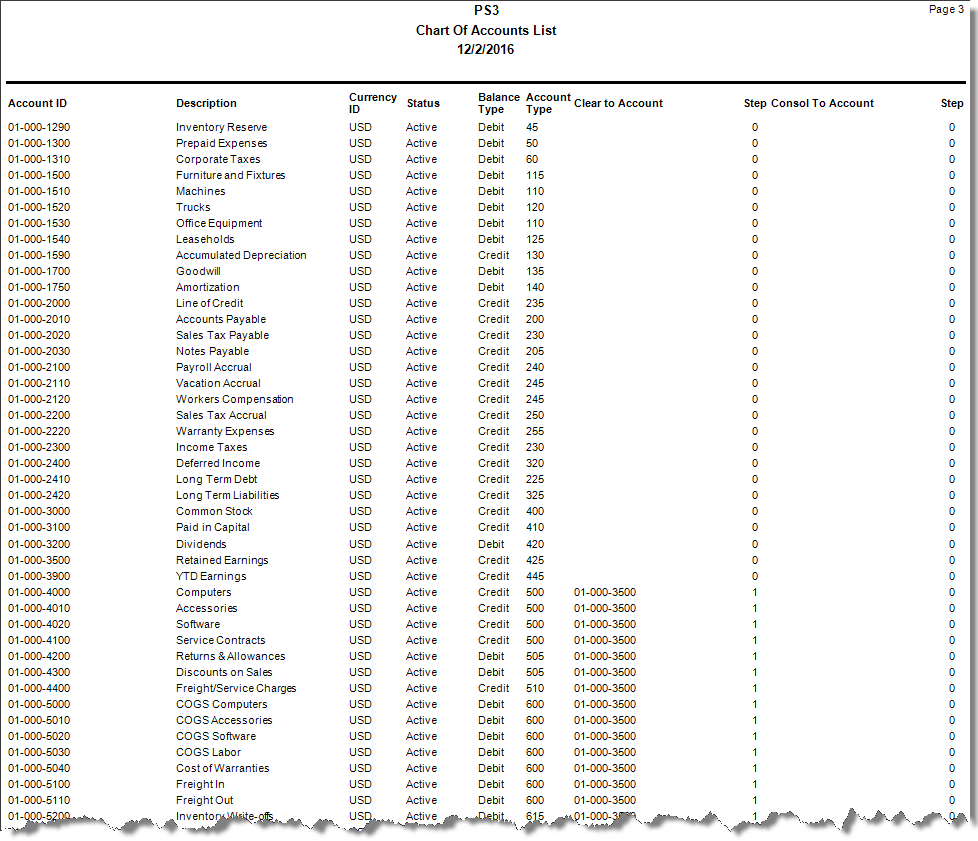TRAVERSE Global v11.1
Chart of Accounts List
Use the Chart of Accounts List function to produce a list of a company's accounts. Check the list to make sure that you entered all the accounts, use it as a reference when you set up recurring entries and enter transactions, or print the list to identify active and inactive GL accounts.
Before you clear and close at the end of the year, print this list (include clear-to and consolidate-to accounts and steps) to verify that the correct clear-to and consolidate-to accounts and steps are assigned to the appropriate accounts.
If you interface General Ledger with other applications, use the list to make sure that the other applications use valid account numbers in the tables and records that affect General Ledger. If they do not, the journal entries from the other applications will not post correctly.
If the accounts are not listed in the order you expect, refer to the explanation of how IDs and codes are sorted. The account numbers, masks, or sort order may be incorrect.
- Use the Data Filter to select the range of filtering options or leave the filter blank to include all available data.
- Select the View Clear/Consolidate Accounts check box, if applicable, to include clear-to and consolidate-to information in the list.
- Select, if applicable, the Banded Rows check box to highlight alternating lines on the list to make the report easier to read.
Note: Use the Print Preferences function in the System Manager Business Rules to define the default setting for this check box. You can then override this default when you print the list. - Manage the sorting order for account IDs using the Account ID Sort section.
- Enter up to four lines to use as the report heading in the Headings section.
- Click a command button to
| Click | To |
| Process the Chart of Accounts List. | |
| Output | Output the list as a PDF. |
| Send | Save the list as a PDF and attach it to an email using your default mail program. |
| Preview | View a preview of the Chart of Accounts List. |
| Reset | Set all fields to their default values. |

